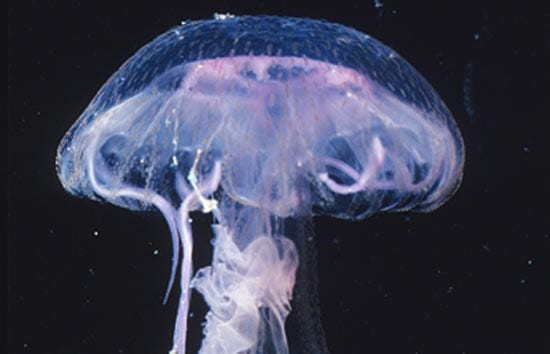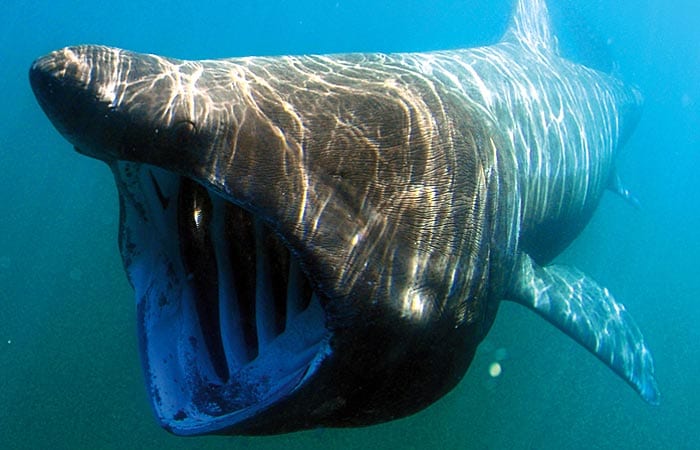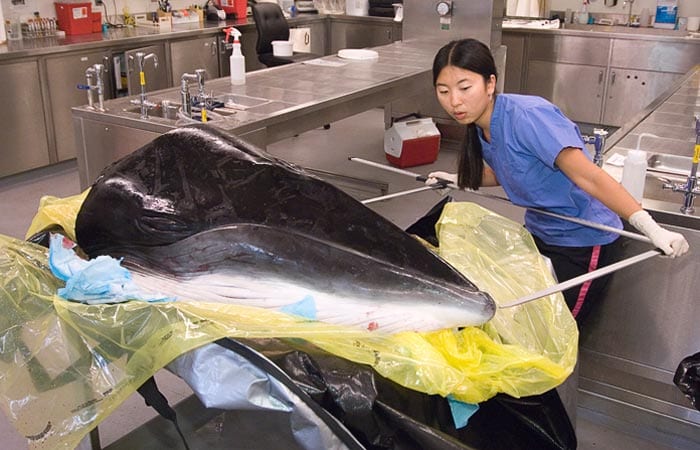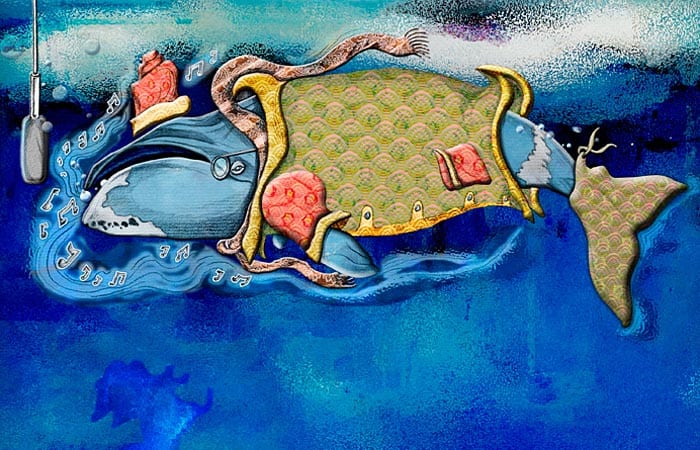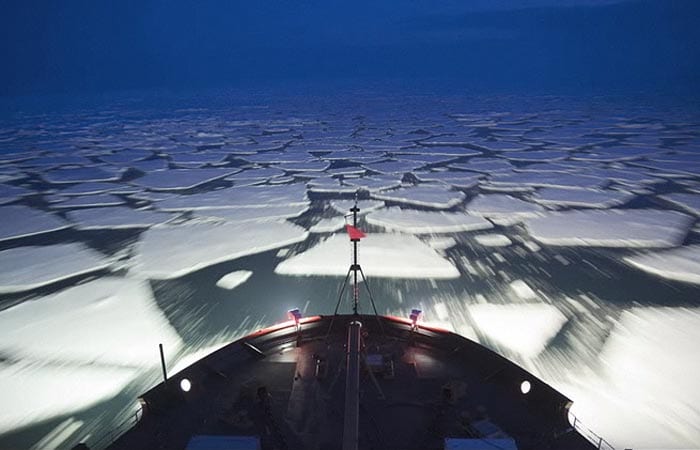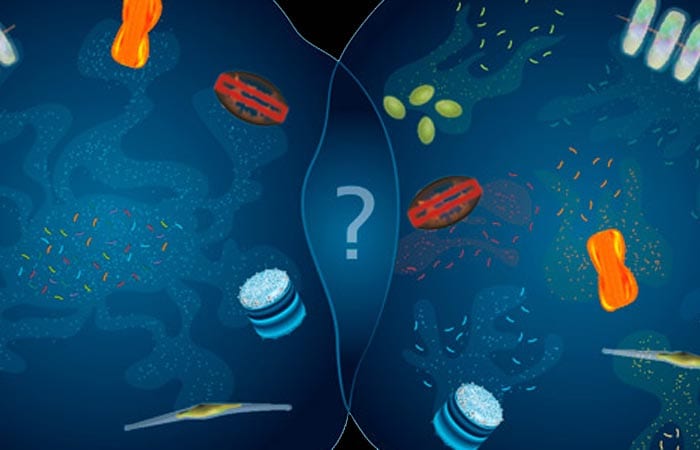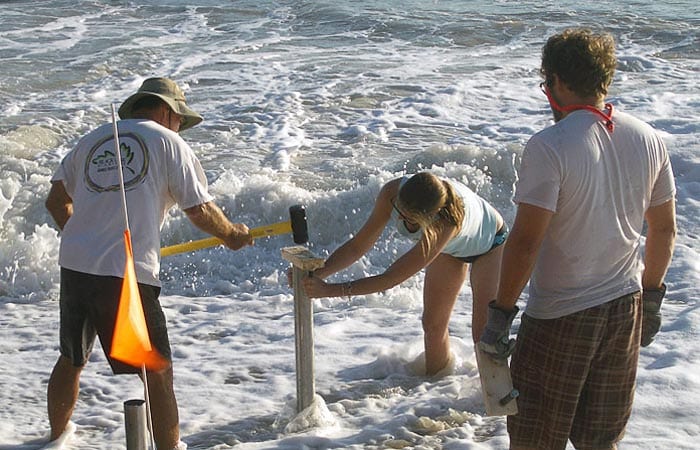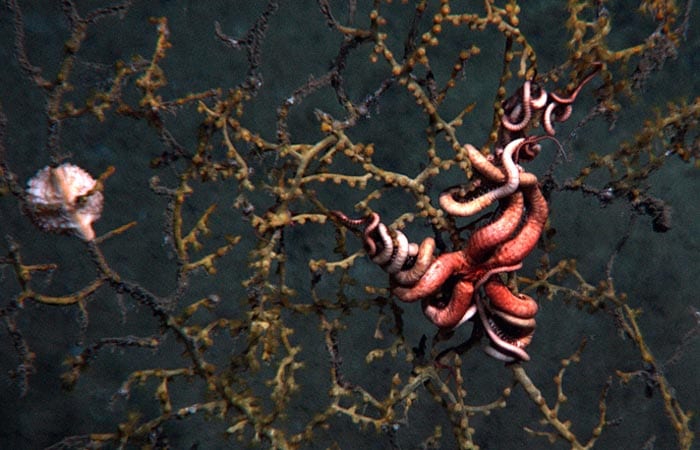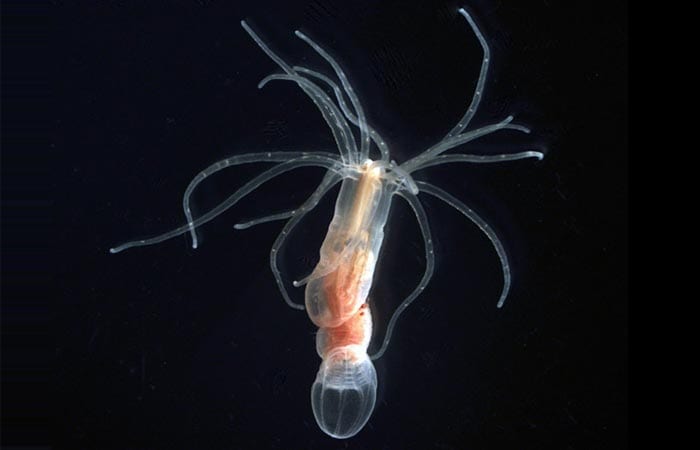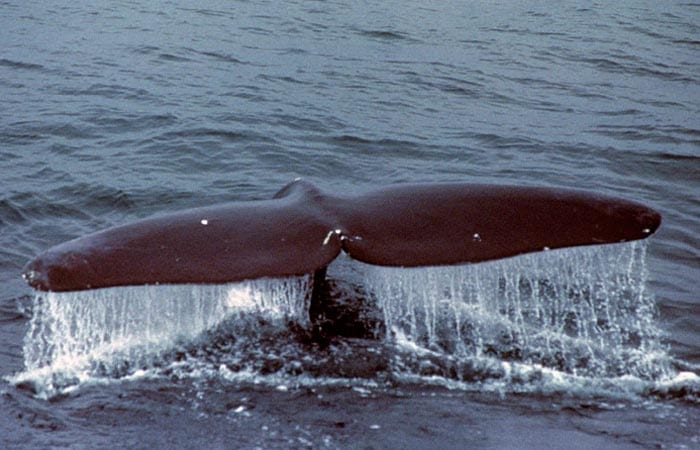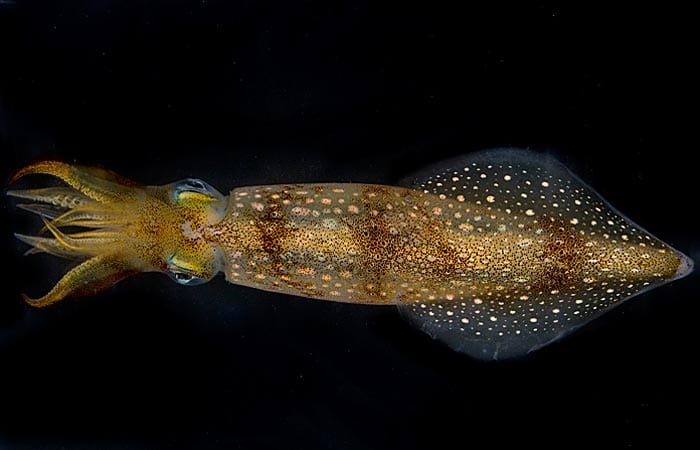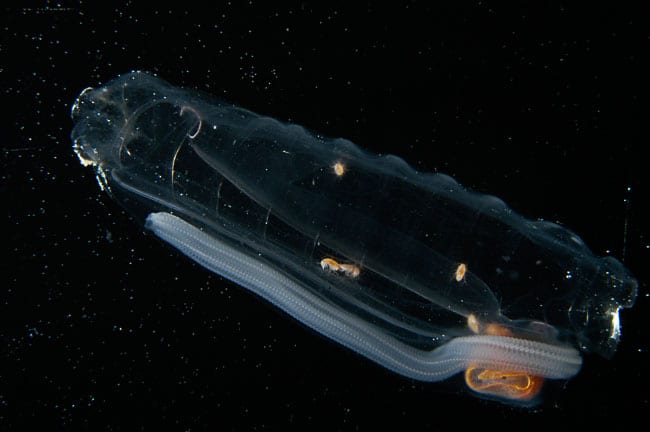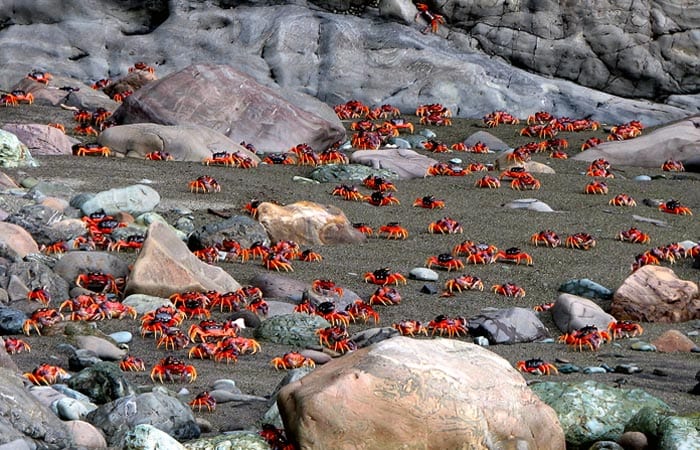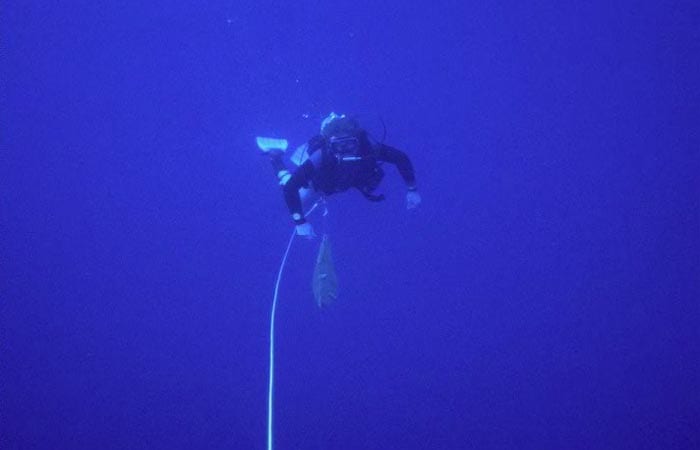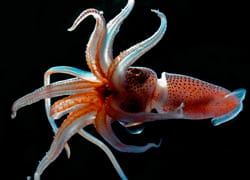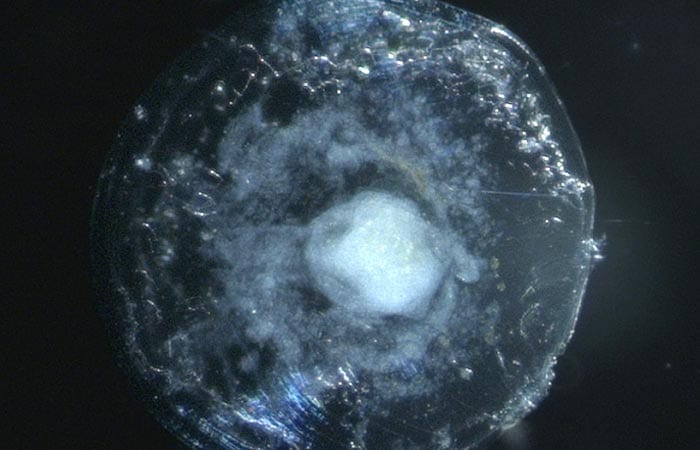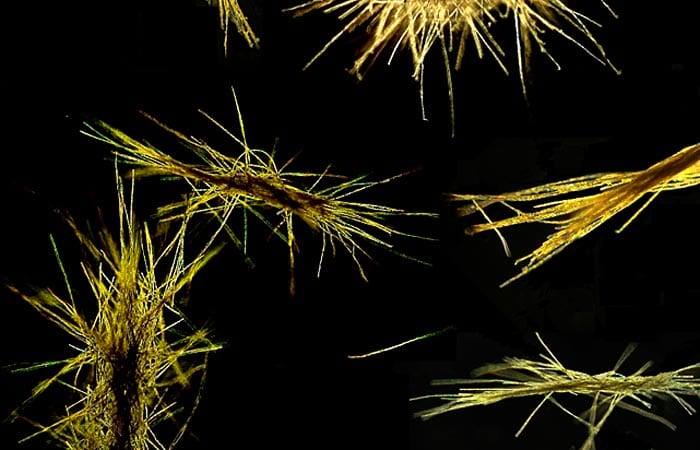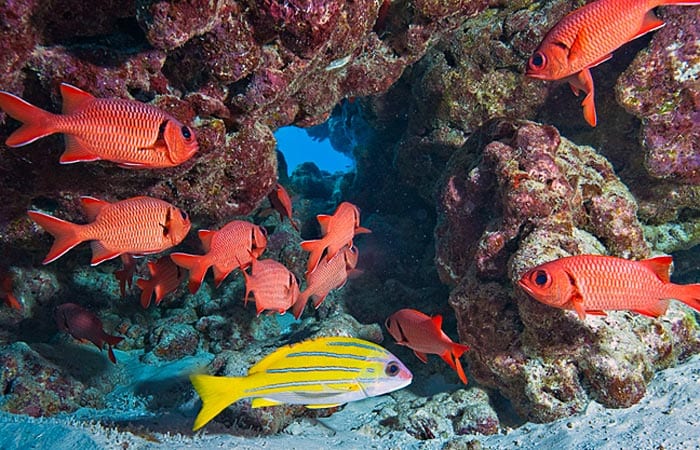Biology
Are Jellyfish Populations Increasing?
Delicate but armed, mindless yet unstoppable, jellyfish sometimes appear abruptly near coasts in staggering numbers that cause problems and generate headlines: Jellyfish fill fishing nets in Japan, sinking a boat.…
Read MoreClues in Shark Vertebrae Reveal Where They’ve Been
It’s 1963. The escalating arms race and the horrific power of nuclear bombs cause world leaders to sign the Limited Test Ban Treaty, prohibiting weapons testing in the atmosphere and…
Read MoreWhale Heads and Tales
It’s a Saturday morning at Herring Cove Beach in Provincetown, Mass., the farthest point on the Cape. I am sleepy, hungry, and slightly dehydrated, but we are on a schedule…
Read MoreThe Latest Fashion in Bowhead Whale Songs
Whales, it turns out, are dedicated followers of fashion. There’s a style to the song they sing to attract mates, and that style shifts. To keep up with their very…
Read MoreInto the Dark and Ice
A Drop in the Ocean is Teeming with Life
“The universe is made of stories …“ —Muriel Rukeyser There are countless stories in every drop of seawater. But with a cast of millions and more plotlines than a daytime…
Read MoreShifting Sands and Bacteria on the Beach
Most coastal communities in the United States test the water at beaches for the presence of bacteria. But they don’t routinely test the sand. Does sand also harbor bacteria? Until…
Read MoreLife and Death in the Deep Sea
It was an experiment they hoped would never happen. But when it did, they were poised to respond. In 2008, a multi-institutional team of researchers launched a long-term study to…
Read MoreDoes Oil Affect Animals’ Cellular Machinery?
Ann Tarrant has a soft spot for a tiny, tentacled creature. So what if starlet anemones (Nematostella vectensis) are spineless invertebrates that burrow in mud in stagnant brackish tidal marshes?…
Read MoreRecycling Rare, Essential Nutrients in the Sea
In the vast ocean where an essential nutrient—iron—is scarce, a marine bacterium that launches the ocean food web survives by using a remarkable biochemical trick: It recycles iron. By day,…
Read MoreTiny Protozoa May Hold Key to World Water Safety
Right now, it looks a little like one of those plastic containers you might fill with gasoline when your car has run dry. But Scott Gallager is not headed to the nearest Mobil station. The Woods Hole Oceanographic Institution (WHOI) biologist has other, grander plans for his revolutionary Swimming Behavioral Spectrophotometer (SBS), which employs one-celled protozoa to detect toxins in water sources.
Read MoreAre Whales ‘Shouting’ to be Heard?
When we’re talking with friends and a truck rumbles by or someone cranks up the radio, we talk louder. Now scientists have found that North Atlantic right whales do the…
Read MoreVolunteer Gets an Oceanful of Experience
<!– –> It’s two in the morning, and I’m watching a remotely operated vehicle, or ROV, explore previously unseen areas of the seafloor off Indonesia. In real time, I watch…
Read MoreScientists Find that Squid Can Detect Sounds
The ordinary squid, Loligo pealii, is well known as a kind of floating buffet. “Almost every type of marine organism feeds somehow off squid,” said biologist T. Aran Mooney, a…
Read MoreTracking a Trail of Oil Droplets
In the days after oil began gushing from the Deepwater Horizon well, scientists sought quick information on where the oil was traveling in the depths and how it might be…
Read MoreSalps Catch the Ocean’s Tiniest Organisms
Salps are sometimes called “the ocean’s vacuum cleaners.” The soft, barrel-shaped, transparent animals take in water at one end, filter out tiny plants and animals to eat with internal nets…
Read MoreA Torrent of Crabs Running to the Sea
Joanna Gyory’s Ph.D. plans changed completely when she saw the crabs. It was her third or fourth day at the Liquid Jungle Lab, a research facility on an undeveloped island…
Read MoreHolography and Oceanography
Inside the Open Ocean
The Squid, the Whale, and the Grad Student
On the Serengeti Plains of Africa, lions stalk their prey mainly by sight. Scientists studying them also use their eyes to observe the hunt and indeed the entire ecosystem. They…
Read MoreThe Mysterious Movements of Deep-Sea Larvae
The marvelous migrations of fish and whales through the deep sea have been hard enough for us humans to follow. But what about tiny organisms—many smaller than the dot beneath…
Read MoreDye Sheds Light on Jet-Propelled Salps
The boat loaded, we push off from shore. We are headed out for a nighttime blue-water scuba dive in search of salps off the Pacific coast of Panama. Salps are…
Read MoreHaving Their Phosphorus and Eating It Too
Try naming the nutrients you need to be strong and healthy. Chances are phosphorus will be pretty far down the list, if it’s there at all. And yet, you and…
Read MoreVoyage to the Remote Phoenix Islands
The Phoenix Islands aren’t obvious on a map—eight scattered coral atolls barely above sea level in the equatorial western Pacific. These specks form the most remote coral island archipelago in…
Read More
